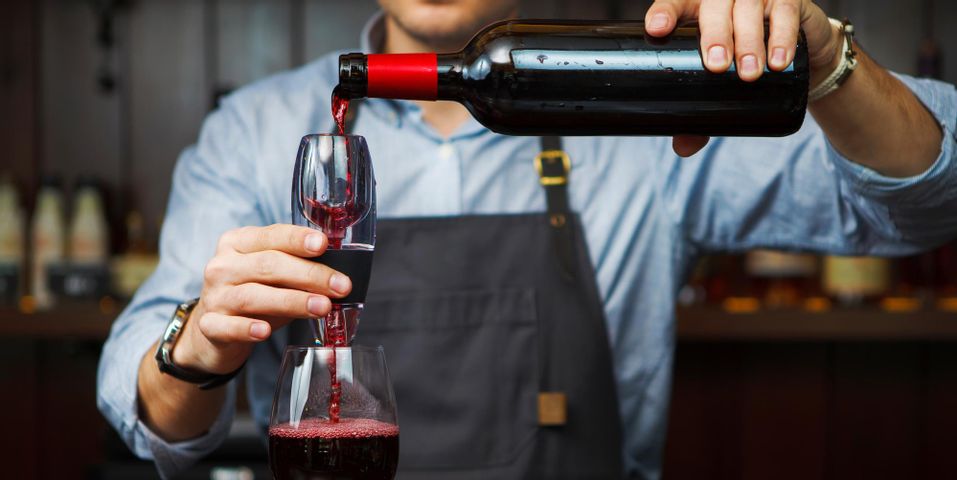
Whether you’re enjoying a glass of Pinot Noir with your meal or attending a wine tasting, it’s essential that your beverage is allowed to breathe. Contact with oxygen develops the aroma and helps to soften the flavors. Letting your alcohol breathe also provides an opportunity to filter out sediment that has settled in the bottle. There are two main ways to achieve these goals: aerating and decanting.
Aerating
An aerator is a device that forces bubbles of air into the wine as it’s poured through it. The result is a quick and powerful oxygenation process that immediately softens the flavor. This is an excellent option in casual settings where there isn’t much time between selecting the bottle and drinking it. However, aerating can be too harsh for bottles over 10 years old because their flavors may fade with excessive oxygen, leaving your wine tasting dull.
Decanting
 If you have the time before your meal or wine tasting, decanting is almost always better for both old and new vintages. A decanter is a wide bottle that creates a large surface area so that your wine can come into contact with oxygen without agitating it. This device allows for a slower, more controlled breathing process. Once your bottle is decanted, taste it periodically to determine when it has reached your desired stage of development. Sediment settles to the bottom of a decanter, leaving you with a clear and fully developed wine.
If you have the time before your meal or wine tasting, decanting is almost always better for both old and new vintages. A decanter is a wide bottle that creates a large surface area so that your wine can come into contact with oxygen without agitating it. This device allows for a slower, more controlled breathing process. Once your bottle is decanted, taste it periodically to determine when it has reached your desired stage of development. Sediment settles to the bottom of a decanter, leaving you with a clear and fully developed wine.
If you’d like more information about wine and its breathing process, contact the knowledgeable team at Oeno Winemaking in Kailua, HI. Since 2008, this winery has offered locals and visitors a wide selection of bottles, including their red blend, which is composed of Sangiovese and Merlot grapes from central Italy. They also provide personalized winemaking experiences and tastings as well as a premier club where members can try quality bottles from around the world. View their inventory online or, call (808) 263- 6366 to schedule a wine tasting. Read customer reviews on Yelp.
About the Business
Have a question? Ask the experts!
Send your question

